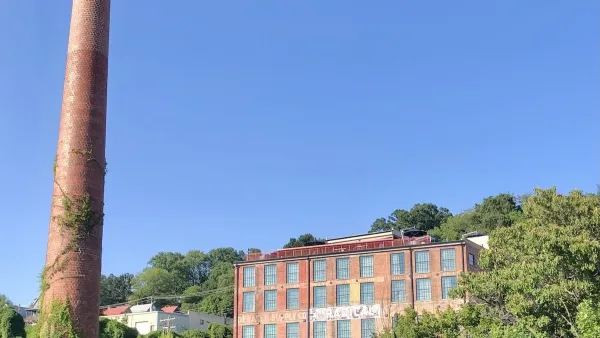Whenever a term is overused, it's up for snark attack. Ben Brown seeks to inoculate himself and others against that tendency, by describing why community health is an admirable goal and how it's connected to economic development (and beer).
Brown muses on what the arrival of a craft beer brewer means to Asheville's redeveloping River Arts District, and finds himself responding to a recent diatribe attacking, "everything remotely connected with "vibrancy" as a goal for urban planning."
"I began to think of taking beer production and consumption to the next level, as an indicator, a quantifiable marker of the 'creative class' economy Richard Florida talks about," writes Brown. "Then I had a snark attack, a reoccurrence of an affliction developed over 20 years as a newspaper reporter. It presents this way: You come upon an idea pushed with maybe a little too much idealistic enthusiasm, especially by folks who are easy to make fun of. And the impulse to ridicule is just too overwhelming to resist."
Brown then goes on to describe some people's reaction to the overuse of the word "vibrancy" in urban planning and community life. While it may come across as phony to some, with farmers markets, craft beer breweries, art festivals and the like entertaining the creative class, Brown looks beyond the semantics, to the meat of the debate.
"We have a tendency to mistake the sizzle for the steak. If it has meaning at all, 'vibrancy,' taken together with a bunch of other indicators, implies community health, just as it might imply an individual's health. But it's more of an indicator than a driver. More effect, than cause. So imagining that a few street festivals and an art show will work magic in the absence of harder, more complicated work is naïve – and near criminal if chasing vibrancy diverted millions of dollars in cities from more productive, community-enhancing projects. But it doesn't."
"The places out front in the vibrancy sweepstakes tend to be those that discovered a healthy cultural vitality working on smaller scales, figured out links between that vitality and the quality-of-life components that citizens and companies value, then funneled a few extra bucks in that direction. Which gets me back to Asheville and beer..."
Here's hoping in the next blog, he gets around to that Urban Beer Index!
Thanks to Hazel Borys
FULL STORY: In Defense of ‘Vibrancy’ (And beer)

Analysis: Cybertruck Fatality Rate Far Exceeds That of Ford Pinto
The Tesla Cybertruck was recalled seven times last year.

National Parks Layoffs Will Cause Communities to Lose Billions
Thousands of essential park workers were laid off this week, just before the busy spring break season.

Retro-silient?: America’s First “Eco-burb,” The Woodlands Turns 50
A master-planned community north of Houston offers lessons on green infrastructure and resilient design, but falls short of its founder’s lofty affordability and walkability goals.

Test News Post 1
This is a summary

Analysis: Cybertruck Fatality Rate Far Exceeds That of Ford Pinto
The Tesla Cybertruck was recalled seven times last year.

Test News Headline 46
Test for the image on the front page.
Urban Design for Planners 1: Software Tools
This six-course series explores essential urban design concepts using open source software and equips planners with the tools they need to participate fully in the urban design process.
Planning for Universal Design
Learn the tools for implementing Universal Design in planning regulations.
EMC Planning Group, Inc.
Planetizen
Planetizen
Mpact (formerly Rail~Volution)
Great Falls Development Authority, Inc.
HUDs Office of Policy Development and Research
NYU Wagner Graduate School of Public Service




























